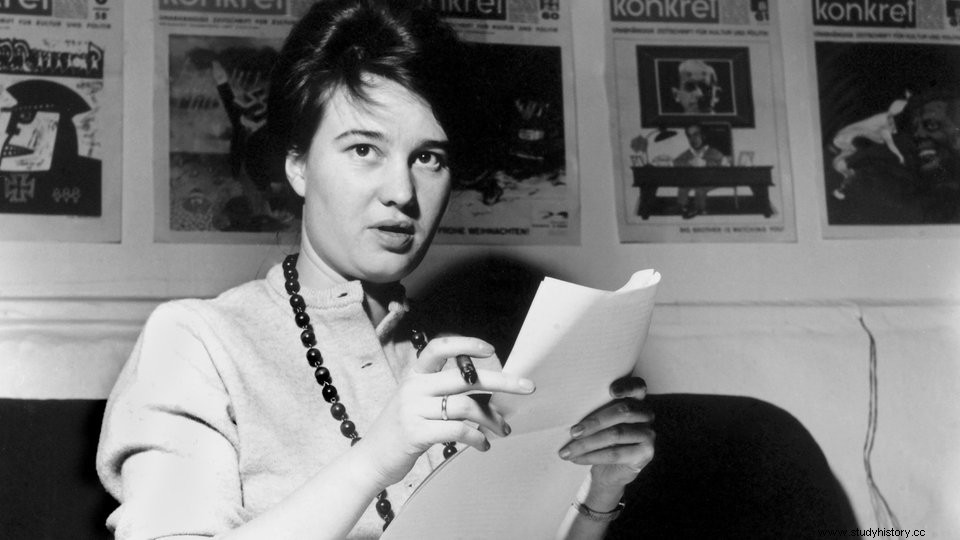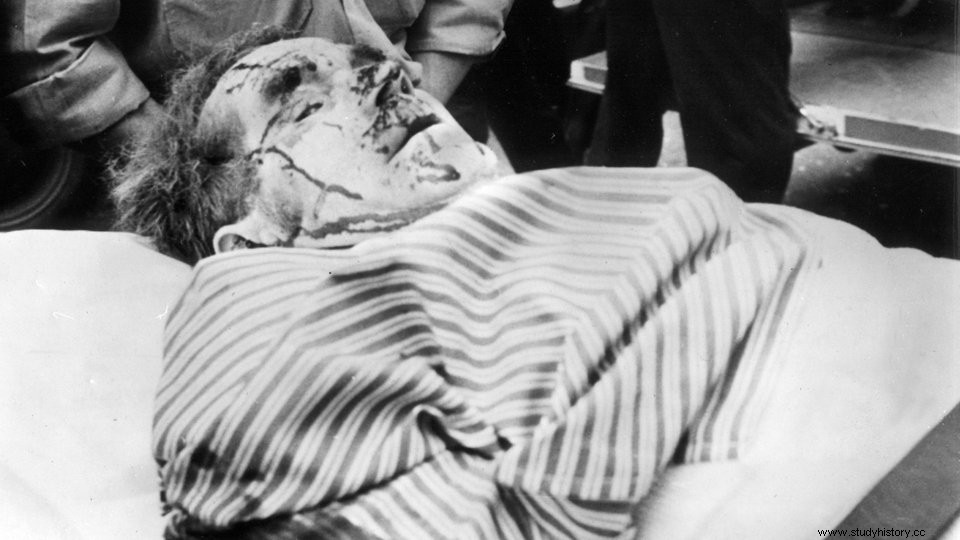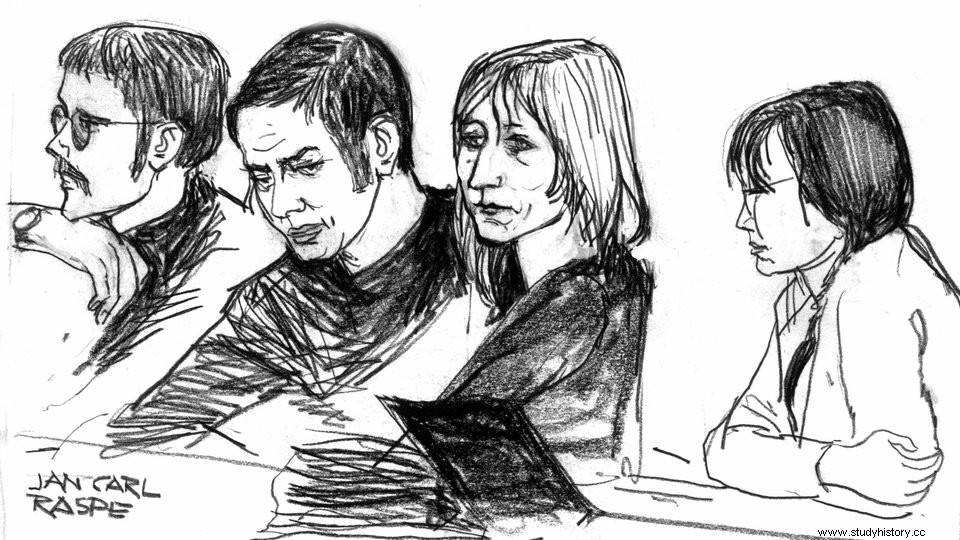Attacks, kidnappings, murders - for more than two decades the terrorist organization "Red Army Faction" (RAF) kept Germany in suspense.
The objectives of the RAF
Initially, the goals of the RAF had much in common with those of the student movement:the RAF protested against capitalism and questioned the existence of the bourgeois state. But she did it not only with words, but also opened the armed struggle.
Although many people died in this fight, the RAF held a strange fascination for many then as now. Perhaps also because their goals are vague and many aspects of their history remain obscure to this day.
The history
A student had died:Benno Ohnesorg. Killed by a shot in the head by a police officer during protests against the visit of the Shah of Persia. A whole movement was hit:"The state shot at all of us," said the ranks of the students in 1967.
It was a turning point. Militant groups associated with the previously peaceful student movement gained influence. And in Berlin there were two who considered violence indispensable in the fight against the state:Andreas Baader and Gudrun Ensslin.
In April 1968, together with other allies, they set fires to two department stores in Frankfurt in order to protest against the "imperialist system". They were arrested after only two days and sentenced to three years in prison.
The birth of the RAF
While Gudrun Ensslin and the others were able to escape prison time, Baader was caught. But he only spent a month behind bars.
In May 1970 he was allowed to visit the library of the "Central Institute for Social Questions" in Berlin. The journalist Ulrike Meinhof was supposed to work with him on a book there. But Meinhof had allied himself with the RAF and Baader could be freed with the help of armed like-minded people.

The journalist Ulrike Meinhof
It was a media coup and – as we say today – the birth of the RAF, because the leading figures had now found each other:Baader, Meinhof, Ensslin and the lawyer Horst Mahler. In fact, the group was still nameless at this point. The media called them the "Baader-Meinhof Gang".
The beginning of terror
Money was needed to buy apartments, cars and weapons and to finance life underground. In 1970 the group robbed several banks, stole vehicles and documents.
In 1971, the RAF gave itself its name in Ulrike Meinhof's strategy paper "The Urban Guerrilla Concept". It was also here that the symbol of the Red Army Faction first appeared:the red star with a submachine gun.
In her manifesto, Meinhof propagated the need for armed struggle. And indeed, the first fatality was soon:In October 1971, the Hamburg policeman Norbert Schmid was shot dead during a pursuit.
Bloody May 1972
In protest against the Vietnam War, the RAF carried out a series of bomb attacks, including on US Army headquarters in Heidelberg and Frankfurt. Four US soldiers died.

Bloody attack in Hamburg
But there were also German targets:the police headquarters in Augsburg and the car of federal judge Wolfgang Buddenberg, who was responsible for the investigations into the RAF.
In May 1972, several bombs went off in the Axel Springer building in Hamburg. Although there had been several warning calls beforehand, the building had not been evacuated. More than 30 people were injured in the attack.
The high-security prison in Stammheim
The bomb attacks were followed by the largest manhunt in the history of the Federal Republic. In June 1972, the RAF leaders of the so-called first RAF generation were arrested in rapid succession and held in prisons near their places of arrest.
The RAF members called it "solitary confinement" and demanded that they be combined into one prison - with hunger strikes that attracted attention from the media and had serious consequences. In November 1974, Hamburg RAF member Holger Meins died in the Wittlich correctional facility despite being force-fed.
In 1975, the RAF leadership was merged into the Stuttgart-Stammheim prison. The maximum security prison had been completely refitted for this purpose. For fear of rescue attempts with helicopters, steel cables spanned large parts of the facility.
To avoid risky prisoner transports, a windowless courtroom was specially built next to the prison's high-security wing. This is where the trial against the RAF leadership began in May 1975.

The RAF leadership in court
The difficult process
The defendants were charged with four murders, 39 attempted murders and six bomb attacks. The process was difficult. In many cases it was not possible to determine which of the accused had been involved in which offences. So the verdict followed only after 192 days of negotiations in April 1977:life imprisonment for Baader and Ensslin.
Ulrike Meinhof was already dead at this point:in May 1976 she had hanged herself on the window bars of her cell. Or she had become the victim of a government contract killing - at least that's what the other RAF members claimed.
During her imprisonment, the journalist became estranged from the other members of the RAF leadership and apparently had to put up with a lot of insults, especially from Gudrun Ensslin.
Ulrike Meinhof's body was buried in the Trinity Cemetery in Berlin in 1976. Her brain was not buried until 2002. It had been taken after her death, without the knowledge of her relatives, in order to carry out medical examinations.
Stammheim's Night of Death
While the top of the RAF was in prison, a second RAF generation had come together outside. Their most urgent goal was the liberation of the RAF founders. But all attempts to free the prisoners failed.
In 1977, a Palestinian terrorist commando hijacked a Lufthansa plane - also to support the demands of the RAF. But the kidnapping failed. When the news got through to the imprisoned RAF leadership, Andreas Baader, Gudrun Ensslin and Jan-Carl Raspe killed themselves in their cells on the night of October 17th, 1977.
Irmgard Möller was taken to the hospital with numerous knife wounds. To this day, she denies collective suicide and speaks of state-ordered murders. However, no evidence of external influence was ever found.
